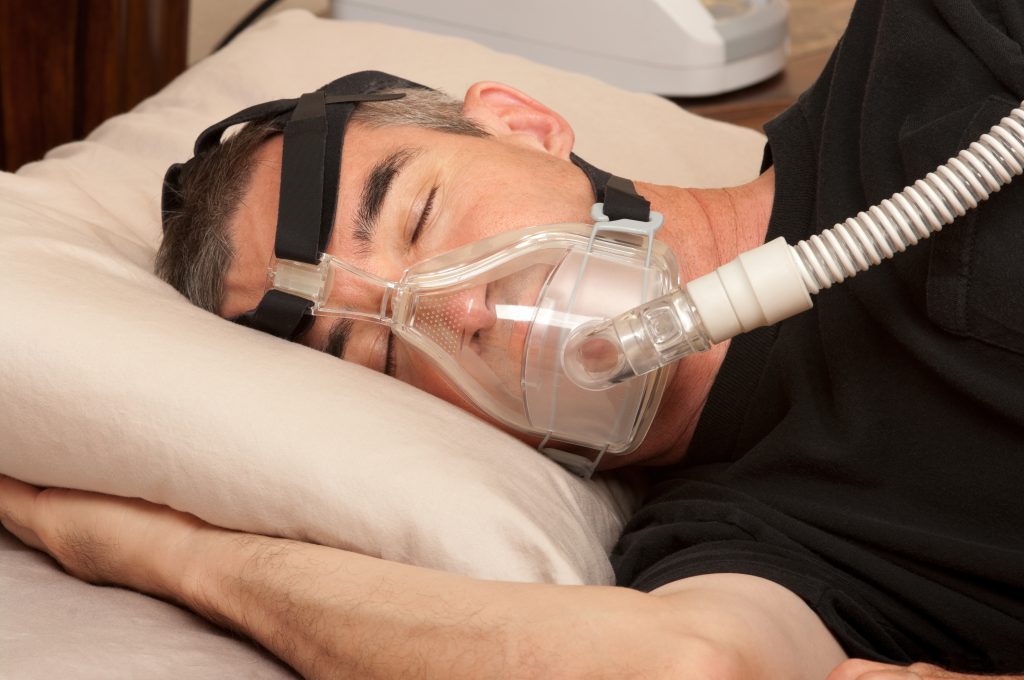Looking for Expert-Level VA Claim Answers?📱Call Us Now! 737-295-2226
Huge VA disability changes are coming this year regarding how the VA reviews and rates Mental Health, Sleep Apnea, Tinnitus, and GERD to include Acid Reflux.
The exact implementation dates are not known; however, summer/fall 2024 is my best guess…
What does this mean for you?
Get your VA claims in ASAP!
Why?
Because I think you want to get rated under the old criteria, which in my opinion, is generally more favorable to you, which could result in a higher VA rating and more tax-free compensation.
Pro Tip: If you already have a VA rating for one of these conditions, you are “grandfathered in” under the old rating system. These changes will not affect your current VA rating.
What are the Major VA Disability Changes This Year?
Here’s a list of four big VA rating changes for 2024:
- #1. Changes to the VA rating criteria for Mental Health: I think this is GOOD for veterans.
- #2. Changes to the VA rating criteria for Sleep Apnea: I think this is BAD for veterans.
- #3. Changes to the VA rating criteria for Tinnitus: I think this is BAD for veterans.
- #4. Changes to the VA rating criteria for GERD and Acid Reflux: I think this is BAD for veterans.
2024 VA Mental Health Disability Rating Changes
Major VA mental health rating changes are coming this year.
The VA has proposed to adopt new evaluation criteria that more accurately captures the occupational impairment caused by mental disabilities and provide adequate compensation for the earnings losses experienced by veterans with service connected mental disorders.
The VA says: “the new criterion should generally lead to more generous compensation for veterans than the current rating formula.”
I think the changes will allow for higher ratings for mental health conditions with less stringent requirements for the 70% and 100% rating criteria and a required minimum rating of 10% for any diagnosed mental health condition.
The 0% rating for mental health has been removed.
VA Mental Health Rating Changes: When Will These Changes Become Official?

The exact implementation date is not known; however, summer or fall 2024 is our best guess.
Also note that once the VA has finalized these proposed changes, there is a 60 day “cooling off” period before the changes take effect.
Pro Tip: If you already have a VA rating for mental health, you are “grandfathered in” under the old rating system. These new updates will not impact your current rating.
New VA Mental Health Rating Criteria
| New VA Ratings for Mental Health (2024) | VA Rating |
|---|---|
| The General Rating Formula for Mental Disorders contains five domains related to function: Cognition; interpersonal interactions and relationships; task completion and life activities; navigating environments; and self-care. The criteria below describe each domain. | |
| The General Rating Formula for Mental Disorders provides criteria for each domain for levels of function ranging from 0 to 4, as appropriate. The highest level of impairment, a score of 4, signifies “total,” and the lowest level of impairment, a score of 0, signifies “no difficulties.” | |
| Evaluate based on the level of impairment in each domain and the number of affected domains, as follows: | |
| Level 4 in one or more domains, or Level 3 in two or more domains | 100% |
| Level 3 in one domain, or Level 2 in two or more domains | 70% |
| Level 2 in one domain | 50% |
| Level 1 in two or more domains | 30% |
| Minimum rating | 10% |
*NEW* Domain, Impairment, and Criteria for VA Mental Health Conditions
| Domain | Level of impairment | Criteria |
|---|---|---|
| 1. Cognition: May include, but is not limited to, memory, concentration, attention, goal setting, speed of processing information, planning, organizing, prioritizing, problem solving, judgment, making decisions, or flexibility in adapting when appropriate. | ||
| 0 = None | No difficulties: Cognitive functioning intact. | |
| 1 = Mild impairment at any frequency; or moderate impairment that occurs less than 25% of the time | Mild: Slight difficulties in one or more aspects of cognitive functioning that do not interfere with tasks, activities, or relationships. | |
| 2 = Moderate impairment that occurs 25% or more of the time; or severe impairment that occurs less than 25% of the time | Moderate: Clinically significant difficulties in one or more aspects of cognitive functioning that interfere with tasks, activities, or relationships. | |
| 3 = Severe impairment that occurs 25% or more of the time; or total impairment that occurs less than 25% of the time | Severe: Serious difficulties in one or more aspects of cognitive functioning that interfere with tasks, activities, or relationships. | |
| 4 = Total impairment that occurs 25% or more of the time | Total: Profound difficulties in one or more aspects of cognitive functioning that cannot be managed or remediated; incapable of even the most basic tasks within one or more aspects of cognitive functioning; difficulties that completely interfere with tasks, activities, or relationships. | |
| 2. Interpersonal interactions and relationships: Includes both informal (social, associational, etc.) and formal (coworkers, supervisors, etc.). | ||
| 0 = None. | No difficulties: Individual able to have relationships and interact with others at work, school, and other contexts. | |
| 1 = Mild impairment at any frequency; or moderate impairment that occurs less than 25% of the time | Mild: Slight difficulties in one or more aspects of interpersonal functioning that do not interfere with tasks, activities, or relationships. | |
| 2 = Moderate impairment that occurs 25% or more of the time; or severe impairment that occurs less than 25% of the time | Moderate: Clinically significant difficulties in one or more aspects of interpersonal functioning that interfere with tasks, activities, or relationships. | |
| 3 = Severe impairment that occurs 25% or more of the time; or total impairment that occurs less than 25% of the time | Severe: Serious difficulties in one or more aspects of interpersonal functioning that interfere with tasks, activities, or relationships, even with accommodations or assistance. | |
| 4 = Total impairment that occurs 25% or more of the time | Total: Profound difficulties in one or more aspects of interpersonal functioning that cannot be managed or remediated; incapable of even the most basic tasks within one or more aspects of relationships; difficulties that completely interfere with tasks, activities, or relationships. | |
| 3. Task completion and life activities: May include, but are not limited to, the following types of activities: Vocational, educational, domestic, social, or caregiving. | ||
| 0 = None | No difficulties: Individual able to perform tasks and participate in life activities; needs no accommodations or assistance. | |
| 1 = Mild impairment at any frequency; or moderate impairment that occurs less than 25% of the time | Mild: Slight difficulties in one or more aspects of task completion or life activities that were completed with minor stress or minor accommodations. | |
| 2 = Moderate impairment that occurs 25% or more of the time; or severe impairment that occurs less than 25% of the time | Moderate: Clinically significant difficulties in one or more aspects of task completion or life activities that were completed with significant stress or accommodations. | |
| 3 = Severe impairment that occurs 25% or more of the time; or total impairment that occurs less than 25% of the time | Severe: Serious difficulties in two or more aspects of task completion or life activities that were completed with significant stress and accommodations. | |
| 4 = Total impairment that occurs 25% or more of the time | Total: Profound difficulties in two or more aspects of task completion or life activities, one of which must be vocational, that were not completed even with considerable accommodations due to overwhelming stress; incapable of even the most basic tasks within one or more aspects of task completion or life activities. | |
| 4. Navigating environments: May include, but is not limited to, the following: Leaving the home, being in confined or crowded spaces, independently moving in surroundings, navigating new environments, driving, or using public transportation. | ||
| 0 = None. | No difficulties: Capability to navigate environments intact. | |
| 1 = Mild impairment at any frequency; or moderate impairment that occurs less than 25% of the time | Mild: Slight difficulties in one or more aspects of navigating environments that do not interfere with tasks, activities, or relationships. | |
| 2 = Moderate impairment that occurs 25% or more of the time; or severe impairment that occurs less than 25% of the time | Moderate: Clinically significant difficulties in one or more aspects of navigating environments that interfere with tasks, activities, or relationships. | |
| 3 = Severe impairment that occurs 25% or more of the time; or total impairment that occurs less than 25% of the time | Severe: Serious difficulties in one or more areas of navigating environments that interfere with tasks, activities, or relationships, even with accommodations or assistance. | |
| 4 = Total impairment that occurs 25% or more of the time | Total: Profound difficulties in one or more aspects of navigating environments that cannot be managed or remediated; incapable of even the most basic tasks within one or more aspects of environmental navigation; difficulties that completely interfere with tasks, activities, or relationships. | |
| 5. Self-care: May include, but is not limited to, the following types of activities: Hygiene, dressing appropriately, or taking nourishment. | ||
| 0 = None | No difficulties: Self-care capabilities intact. | |
| 1 = Mild impairment at any frequency; or moderate impairment that occurs less than 25% of the time | Mild: Slight difficulties in one or more aspects of self-care that do not interfere with tasks, activities, or relationships. | |
| 2 = Moderate impairment that occurs 25% or more of the time; or severe impairment that occurs less than 25% of the time | Moderate: Clinically significant difficulties in one or more aspects of self-care that interfere with tasks, activities, or relationships without accommodations or assistance. | |
| 3 = Severe impairment that occurs 25% or more of the time; or total impairment that occurs less than 25% of the time | Severe: Serious difficulties in one or more aspects of self-care that interfere with tasks, activities, or relationships, even with accommodations or assistance. | |
| 4 = Total impairment that occurs 25% or more of the time | Total: Profound difficulties in one or more aspects of self-care that cannot be managed or remediated; difficulties that completely interfere with tasks, activities, or relationships, even with accommodations or assistance. |
[Download] the Proposed VA Rating Changes for Mental Health
2024 VA Sleep Apnea Changes
Big changes to VA Ratings for Sleep Apnea are coming this year.
The new ratings, if approved, would be 0%, 10%, 50%, and 100%.
The biggest change is the removal of the “automatic” 50% CPAP VA rating for sleep apnea if a veteran requires the use of a breathing device.
The 30% rating for sleep apnea would also be removed.
Overall, I think the proposed VA rating changes to sleep apnea are going to be bad for veterans because the 50% rating with a CPAP is gone (by far the most common rating now); instead, under the new criteria, I think a veteran with a CPAP will only get a 10% rating.
Okay, let’s explore the new ratings for Sleep Apnea in more detail.
What is the VA Sleep Apnea Changes Effective Date?

The exact implementation date is not known; however, summer or fall 2024 is our best guess.
Also note that once the VA has finalized these proposed changes, there is a 60 day “cooling off” period before the changes take effect.
Pro Tip: If you already have a VA rating for sleep apnea, you are “grandfathered” in at your current VA rating, regardless of any changes. These new rating changes for sleep apnea will not impact you.
New Changes to VA Disability Ratings for Sleep Apnea
| DC 6847, Proposed Changes to VA Ratings for Sleep Apnea | VA Rating |
|---|---|
| Sleep apnea with ineffective treatment (as determined by sleep study) or unable to use treatment due to comorbid conditions; and with end-organ damage | 100% |
| Sleep apnea with ineffective treatment (as determined by sleep study) or unable to use treatment due to comorbid conditions; and without end-organ damage | 50% |
| Sleep apnea with incomplete relief (as determined by sleep study) with treatment | 10% |
| Asymptomatic with or without treatment | 0% |
Note: Qualifying comorbidities are conditions that, in the opinion of a qualified medical provider, directly impede or prevent the habitual use of a recognized form of treatment shown by sleep study to be effective in the affected veteran’s case (e.g., contact dermatitis where the mask or interface touches the face or nares, Parkinson’s disease, missing limbs, facial disfigurement, or skull fracture).
[Download] the Proposed VA Rating Changes for Sleep Apnea
2024 Tinnitus VA Rating Changes
The VA has proposed changes to how it will evaluate and rate Tinnitus.
In my opinion, these changes are bad for veterans, and the easy 10% rating for Tinnitus could soon be gone.
The proposed changes would remove the separate VA rating for Tinnitus under DC 6260, and instead, rate Tinnitus only as part of its underlying pathology with Hearing Loss.
For instance, DC 6100 will provide a 10% evaluation for Tinnitus associated with Hearing Loss only when Hearing Loss is non-compensable at 0% (e.g., only when Hearing Loss, on its own, does not warrant a 10% evaluation or higher).
If Hearing Loss is compensable at 10% or more (e.g., warranting a 10% evaluation or greater), an additional 10% evaluation for Tinnitus associated with the Hearing Loss shall not be assigned.
Pro Tip: If you already have a VA rating for Tinnitus at 10%, you are “grandfathered in” under the old rating system. These new updates will not impact your current rating.
New VA Rating Criteria for Tinnitus
| DC 6100, Hearing Loss with Tinnitus as Associated with Underlying Hearing Loss: | VA Rating |
|---|---|
| If Hearing Loss is evaluated at 0% and Tinnitus is diagnosed as associated with underlying Hearing Loss. | 10% |
| Otherwise, evaluate using the Hearing Loss Tables. | |
| Note (#1): The 10% evaluation is only applicable to tinnitus diagnosed as associated with non-compensable service-connected hearing loss. Tinnitus diagnosed as associated with another service-connected disability (i.e., Meniere’s disease, residuals of traumatic brain injury (TBI), cerebral arteriosclerosis, vascular neurocognitive disorder) must be evaluated as a part of that disability without a separate evaluation for tinnitus under diagnostic code 6100. | |
| Note (#2): Tinnitus will only be compensated as part of an underlying service-connected condition. |
Why is the VA Changing Tinnitus Ratings?
The VA asserts these changes are to better align with current medical practice.
For example, the Mayo Clinic says:
“Tinnitus is usually caused by an underlying condition, such as age-related hearing loss, an ear injury or a problem with the circulatory system. For many people, tinnitus improves with treatment of the underlying cause or with other treatments that reduce or mask the noise, making tinnitus less noticeable.”
While not intended by the VA, prior rulemaking created the impression that Tinnitus is an independent condition, rather than a symptom associated with an underlying condition.
The VA’s intent with the proposed revision is to accurately restore the medically-supported relationship between Tinnitus and an underlying pathology, which is better aligned with current medical practice.
[Download] the Proposed VA Rating Changes for Tinnitus
2024 VA Rating Changes for GERD & Acid Reflux
GERD and Acid Reflux VA disability rating changes are here, effective May 19, 2024.
The VA approved adding a new Diagnostic Code (DC) 7206 for rating Gastroesophageal Reflux Disease (GERD), including acid reflux.
GERD and acid reflux are now rated under Esophageal Stricture, DC 7203, with ratings of 0%, 10%, 30%, 50%, or 80%.
Overall, I think this is a bad change for veterans because the new rating criteria for GERD under “esophageal stricture” doesn’t contain any of the most common symptoms of GERD, which doesn’t make any sense.
I think this change will result in veterans getting lower ratings for GERD than under the previous ratings analogous to Hiatal Hernia.
Why is the VA Changing How It Rates GERD & Acid Reflux?

The VA says these changes are “because the new criteria considers symptoms of esophageal obstruction and irritation, which are consistent with the symptoms of GERD.”
Overall, I’m highly skeptical of this change because GERD will now be rated as DC 7206, Gastroesophageal Reflux Disease, which says to rate as Esophagus, Stricture Of, DC 7203.
The new rating criteria only gives credit for GERD with “esophageal stricture,” which means you have difficulty swallowing.
However, many veterans with GERD experience symptoms such as:
- A burning sensation in your chest (heartburn), usually after eating, which may worsen at night
- Chest pain
- Difficulty eating and swallowing
- Regurgitation of food particles or sour liquid
- Sensation of a lump in your throat
If you have nighttime GERD and acid reflux, you might also experience:
- Chronic cough
- Laryngitis
- New or worsening asthma
- Disrupted sleep and insomnia
When Will VA GERD Changes Be Implemented?
The new VA rating criteria for GERD is effective May 19, 2024.
What does this mean for you?
GET YOUR GERD VA CLAIM IN ASAP!
You’ve got a very short window to be rated under the old system.
Pro Tip: If you already have a VA rating for GERD, you are “grandfathered in” under the old rating system. These new updates will not impact your current rating.
New VA Ratings for GERD and Acid Reflux
| VA Ratings for GERD, DC 7203, Esophagus, Stricture of: | VA Rating |
|---|---|
| Documented history of recurrent or refractory esophageal stricture(s) causing dysphagia with at least one of the symptoms present: (1) Aspiration, (2) undernutrition, and/or (3) substantial weight loss as defined by § 4.112(a) and treatment with either surgical correction or percutaneous esophago-gastrointestinal tube (PEG tube) | 80% |
| Documented history of recurrent or refractory esophageal stricture(s) causing dysphagia which requires at least one of the following (1) dilation 3 or more times per year, (2) dilation using steroids at least one time per year, or (3) esophageal stent placement | 50% |
| Documented history of recurrent or refractory esophageal stricture(s) causing dysphagia which requires dilatation no more than 2 times per year | 30% |
| Documented history of esophageal stricture(s) that requires daily medications to control dysphagia otherwise asymptomatic | 10% |
| Documented history without daily symptoms or requirement for daily medications | 0% |
| Note (#1): Findings must be documented by barium swallow, computerized tomography, or esophagogastroduodenoscopy | |
| Note (#2): Non-gastrointestinal complications of procedures should be rated under the appropriate system | |
| Note (#3): This diagnostic code applies, but is not limited to, esophagitis, mechanical or chemical; Mallory Weiss syndrome (bleeding at junction of esophagus and stomach due to tears) due to caustic ingestion of alkali or acid; drug-induced or infectious esophagitis due to Candida, virus, or other organism; idiopathic eosinophilic, or lymphocytic esophagitis; esophagitis due to radiation therapy; esophagitis due to peptic stricture; and any esophageal condition that requires treatment with sclerotherapy | |
| Note (#4): Recurrent esophageal stricture is defined as the inability to maintain target esophageal diameter beyond 4 weeks after the target diameter has been achieved | |
| Note (#5): Refractory esophageal stricture is defined as the inability to achieve target esophageal diameter despite receiving no fewer than 5 dilation sessions performed at 2-week intervals |
[Download] the Official Ruling VA Rating Changes for GERD
Do You Deserve a VA Rating Increase?
- VA Claims Insider is a highly-rated, veteran-owned and operated business.
- 25,000+ disabled veterans served in our membership programs since 2016.
- 30% average VA rating increase for veterans who complete our #1 rated Elite program.
- Employs 200+ teammates; comprised of many veterans and military spouses.
- 4.7/5.0 average rating out of 5,000+ total reviews; over 4,000 5-star reviews.
About the Author

Brian Reese
Brian Reese is a world-renowned VA disability benefits expert and the #1 bestselling author of VA Claim Secrets and You Deserve It. Motivated by his own frustration with the VA claim process, Brian founded VA Claims Insider to help disabled veterans secure their VA disability compensation faster, regardless of their past struggles with the VA. Since 2013, he has positively impacted the lives of over 10 million military, veterans, and their families.
A former active-duty Air Force officer, Brian has extensive experience leading diverse teams in challenging international environments, including a combat tour in Afghanistan in 2011 supporting Operation ENDURING FREEDOM.
Brian is a Distinguished Graduate of Management from the United States Air Force Academy and earned his MBA from Oklahoma State University’s Spears School of Business, where he was a National Honor Scholar, ranking in the top 1% of his class.




